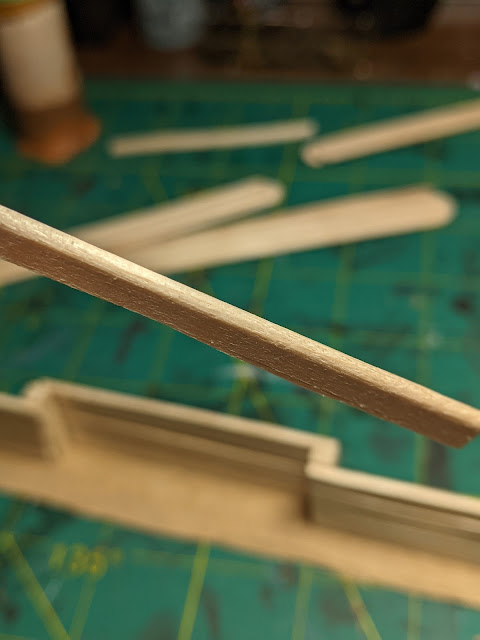Last week I put together a few fences that I wanted to use as line of sight blockers in my Silver Bayonet game, but fences are pretty universal. They may not be particularly 'sci-fi', but I don't see why the future wouldn't have any wood fences! It was a very easy build, and I have taken pictures of each step to illustrate it here.
For this build I used a bit of mdf board as the basing, but some stiff cardboard will work as well. I also used to coffee stir sticks, and a square wooden rod. You could use a round dowel just as easily.
I roughly beveled the edges of the mdf pieces
I cut the square wooden rod into 1 inch lengths. How many you need will depend on how long you want the fence to be. Mine are about 2 rods to one coffee stir stick. I also rough up the edges and cut little lines on the to give them a weathered look.
I glue the rods standing up on the mdf board, using the coffee stir stick to see the right width. You may notice that I have also clipped the round edges of the stir stick, to make it look more like a board.
I run an x-acto knife down the center very slowly, and cut the board into two board. If you have the thinner coffee stir sticks, you won't need to do this. I just find the wider ones look much bigger than a real plank.
Once the board is split, you will see that it still have one rounded edge. You will want to take your knife and flatten this out or give it a scuffed edge.
Much better.
Glue the bottom board to both poles, as well as a bit to the ground for stability. I use gel super glue, because it sets very quickly and I can keep working.
Attach board to the poles until you are near the top.
I made a few larger fences as well, just alternating sides for the boards to go on. The hard part is done, now we weather the wood!
You will want to texture the mdf bases. You can use white glue and sand, but I have a jar of texture paste, so I just apply this liberally.


















Comments
Post a Comment